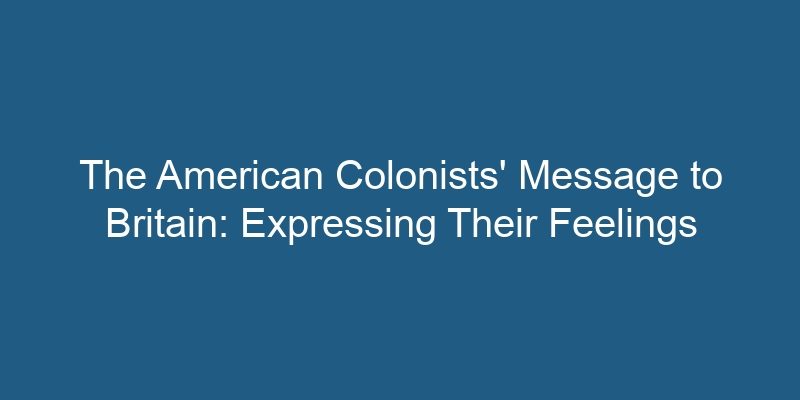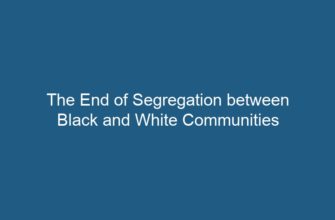- Introduction
- 1. The Tea Act: A Brief Overview
- Young Sailor Tells About the Tea Act and Boston Tea Party
- The story behind the Boston Tea Party – Ben Labaree
- 2. The Boston Tea Party
- 2.1 The Symbolism of the Boston Tea Party
- 3. Pamphlets and Broadsides
- 3.1 The Role of Pamphlets
- 3.2 The Impact of Broadsides
- 4. Correspondence and Letters
- 4.1 Letters to British Authorities
- 4.2 Intercolonial Correspondence
- 5. Public Protests and Demonstrations
- 5.1 Boycotts
- 5.2 Tar and Feathering
- 6. Conclusion
- References:
Introduction
The Tea Act of 1773 was a significant event in American history that further fueled the brewing tensions between the American colonists and the British government. In response to this controversial legislation, the American colonists sought to express their strong sentiments regarding the Tea Act to the British authorities. This article aims to delve into the methods and mediums used by the American colonists to send a compelling message to Britain, showcasing their emotions and opposition to the Tea Act.
1. The Tea Act: A Brief Overview
The Tea Act, passed by the British Parliament in 1773, granted the financially struggling British East India Company a monopoly on tea sales in the American colonies. This act not only infuriated many American merchants and smugglers, who saw it as a threat to their own trade, but also ignited widespread public outrage among colonists who saw it as an infringement on their rights and a form of taxation without representation. Thus, the need for a powerful message to be sent to Britain emerged.
Young Sailor Tells About the Tea Act and Boston Tea Party
The story behind the Boston Tea Party – Ben Labaree
2. The Boston Tea Party
The most iconic and direct form of protest against the Tea Act was the Boston Tea Party. On December 16, 1773, a group of colonists disguised as Mohawk Indians boarded three British ships in Boston Harbor and dumped 342 chests of tea into the water. This act of defiance was a powerful visual symbol of the colonists’ opposition to the Tea Act and their determination to resist British taxation policies.
2.1 The Symbolism of the Boston Tea Party
The Boston Tea Party served as a powerful symbol of resistance and unity among the American colonists. By destroying valuable British tea, the colonists were willing to sacrifice their own economic interests to make a political statement. The event also highlighted the colonists’ strong belief in their rights and their willingness to take direct action against perceived injustices.
3. Pamphlets and Broadsides
Aside from direct acts of protest, the American colonists also utilized the power of the written word to express their feelings towards the Tea Act. Pamphlets and broadsides were widely circulated throughout the colonies, conveying the colonists’ grievances and rallying support against the British government.
3.1 The Role of Pamphlets
Pamphlets played a crucial role in shaping public opinion and disseminating anti-Tea Act sentiments. Prominent colonists, such as Samuel Adams and Thomas Paine, authored influential pamphlets that eloquently argued against the Tea Act and rallied support for resistance. These pamphlets not only helped to educate the colonists about their rights but also encouraged them to take action against British oppression.
3.2 The Impact of Broadsides
Broadsides, large single-sheet posters, were another effective medium for expressing the colonists’ feelings about the Tea Act. These visually striking and concise messages were often displayed in public spaces, capturing the attention of passersby and spreading awareness about the colonists’ opposition to the British government’s actions.
4. Correspondence and Letters
Personal correspondence and letters also played a crucial role in conveying the colonists’ emotions and grievances to Britain. Not only did colonists write letters to British authorities directly, but they also exchanged letters among themselves to discuss strategies, organize protests, and express their shared opposition to the Tea Act.
4.1 Letters to British Authorities
Colonists, such as John Dickinson and John Adams, penned letters to British officials and members of Parliament, articulating their discontent and concerns regarding the Tea Act. These letters aimed to persuade British authorities to reconsider their policies and respect the colonists’ rights.
4.2 Intercolonial Correspondence
Intercolonial correspondence, facilitated by the Committees of Correspondence, allowed colonists to communicate and coordinate their efforts across different colonies. These letters served as a means of sharing information, exchanging ideas, and fostering a sense of unity among the colonists.
5. Public Protests and Demonstrations
Public protests and demonstrations provided another avenue for the American colonists to send a forceful message to Britain regarding their opposition to the Tea Act.
5.1 Boycotts
Boycotts were a popular form of protest against the Tea Act. Colonists organized boycotts of British tea, refusing to purchase or consume it as a way to undermine the economic viability of the Tea Act. These boycotts not only demonstrated the colonists’ refusal to cooperate with British policies but also served as a form of economic pressure on Britain.
5.2 Tar and Feathering
In some instances, colonists resorted to more extreme measures to express their anger towards the Tea Act. Tar and feathering, a practice where a person was coated in hot tar and covered in feathers, was used as a form of public humiliation against British sympathizers and tax collectors. This brutal act served as a warning to those who supported British policies and further emphasized the colonists’ determination to resist.
6. Conclusion
The American colonists employed a variety of methods to send a compelling message to Britain regarding their opposition to the Tea Act. Through direct actions like the Boston Tea Party, the dissemination of pamphlets and broadsides, correspondence and letters, and public protests, the colonists effectively conveyed their feelings and united against British oppression. These efforts ultimately played a pivotal role in fueling the growing revolutionary sentiment that would lead to the American Revolution.
References:
- Smith, Paul H. “The American Revolution in Historical Context: The Boston Tea Party.” History Compass, vol. 5, no. 5, 2007, pp. 1563-1578.
- Young, Alfred F. The Shoemaker and the Tea Party: Memory and the American Revolution. Beacon Press, 2000.
- Morgan, Edmund S. The Birth of the Republic, 1763-89. University of Chicago Press, 1977.










